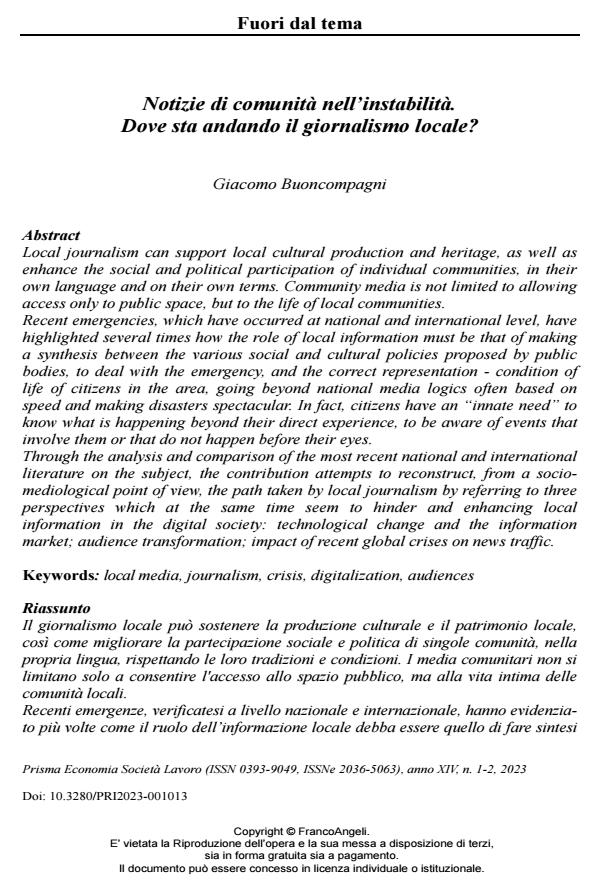Notizie di comunità nell’instabilità. Dove sta andando il giornalismo locale?
Journal title PRISMA Economia - Società - Lavoro
Author/s Giacomo Buoncompagni
Publishing Year 2024 Issue 2023/1-2
Language Italian Pages 17 P. 160-176 File size 233 KB
DOI 10.3280/PRI2023-001013
DOI is like a bar code for intellectual property: to have more infomation
click here
Below, you can see the article first page
If you want to buy this article in PDF format, you can do it, following the instructions to buy download credits

FrancoAngeli is member of Publishers International Linking Association, Inc (PILA), a not-for-profit association which run the CrossRef service enabling links to and from online scholarly content.
Local journalism can support local cultural production and heritage, as well as enhance the social and political participation of individual communities, in their own language and on their own terms. Community media is not limited to allowing access only to public space, but to the life of local communities. Recent emergencies, which have occurred at national and international level, have highlighted several times how the role of local information must be that of making a synthesis between the various social and cultural policies proposed by public bodies, to deal with the emergency, and the correct representation - condition of life of citizens in the area, going beyond national media logics often based on speed and making disasters spectacular. In fact, citizens have an “innate need” to know what is happening beyond their direct experience, to be aware of events that involve them or that do not happen before their eyes. Through the analysis and comparison of the most recent national and international literature on the subject, the contribution attempts to reconstruct, from a socio-mediological point of view, the path taken by local journalism by referring to three perspectives which at the same time seem to hinder and enhancing local information in the digital society: technological change and the information market; audience transformation; impact of recent global crises on news traffic.
Keywords: local media, journalism, crisis, digitalization, audiences
Giacomo Buoncompagni, Notizie di comunità nell’instabilità. Dove sta andando il giornalismo locale? in "PRISMA Economia - Società - Lavoro" 1-2/2023, pp 160-176, DOI: 10.3280/PRI2023-001013